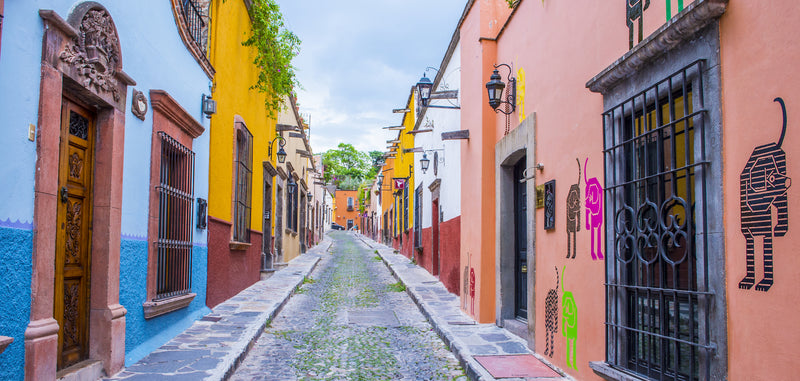Corn Mythology
In ancient Mexico, Mesoamerican mythical time is enclosed in an ancestral past whose pattern is not linear: it has the shape of a Theodore spiral. It was in that distant past that many founding events took place: the creation of the world and the circulation of dual energies - the warm and the cold -, the creation time cycles, the creation of the founding gods such as the feathered serpent (Quetzalcoatl) and the nocturnal jaguar that represented the dual forces of the universe. And it was only after a long time that men were created.
Quetzalcoatl is the main protagonist in the myth of the creation of man. Some stories tell us how he went down to the Mictlan (In Nahuatl, Aztec language), the underworld. That aquatic subterranean world was inhabited by the gods Mictlantecuhtli and Mictlancihuatl, and by all kinds of chtonic spirits, and also by the ancestors… Quetzalcoatl went down to the Mictlan because he needed ancestors bones to create humanity. And it was known that some giants used to live on earth very long time ago. Arriving at the thirteenth floor, the deepest, Quetzalcoatl blowed a conch shell and performed a sacred dance. Then, he wrapped the bones, like seeds extracted from the belly of the earth. But on the way back, he fell into a hole. The big bones broke and it is the reason why humanity was reduced in size...
In Tamoanchan, - a kind of Olimpo here -, the gods placed the bones in a ritual vessel of chalchihuitl, the precious green stone. Then Quetzalcoatl deposited on the precious relics drops of his blood during a magical fertilization ritual. Thus, the first man and the first woman were created. They were considered by the Aztecs as the macehualli ( = all people in Nahuatl language) father and mother.
Then the gods asked themselves, “and what will these men eat”? An ant answered, “the sacred plant of all, the corn will feed human people”!

But the corn and the seeds, the vegetation essentials, its spirits, its vital force, its power of growth, its reproductive power, its nutritive power, and all its magical powers were stored in the Tonacatepetl, the great cosmic granary. So Tlaloc (god of rain) and the four tlaloques - followers of Tlaloc - struck the sacred Mountain with their rays, and suddenly the cosmic mount broke and opened. And suddenly, a black corn sprouted, and a yellow one, a green one, and a blue one... Beans, pumpkins, chia seeds and many other plants sprouted all around. So, without wasting time, the tlaloques stole the seeds of the sacred mountain and took them at the four directions of the world...
And that is how mankind received the first seeds, with the promise to nourish them. But in order to receive the benefits and the magical powers of the sacred life-giving plant, men would have to keep the flame of the corn alive, they would have to know its sacred cycle, they would have to understand the secret of its growth and reproduction, they would have to propitiate the vital energies of the cosmos and they would have to obtain the precious waters of fertility.
And for all of this, they would need the favors of Tlaloc and other gods associated with vegetation, water, life, fertility. Tlaloc, the rain and ray god, was the main god of that group. He acted as the "CEO" god of agriculture because he sent from the cosmic mountain the precious waters that propitiated the germination of the seeds. That is why Tlaloc was called the "Giver".

The agricultural calendar reproduced the life/death cycle. That magical cycle that governed the plant world and the cycle of reproduction on earth was the same cycle that governed human existence. That is why the rituals dedicated to Tlaloc and agricultural gods were primordial. In Mexico, nine of the eighteen months of the solar calendar of 365 days were dedicated to those gods: Tlaloc, Chalchiutlicue, goddess of terrestrial waters, Centeotl and Chicomecoatl corn divinities...
 Mexico is the cradle of corn cultivation. 8000 years ago, inhabitants of the actual state of Puebla and Oaxaca begun to cultivate the corn ancestor, known as Teocintle. Corn’s domestication took a very long time. But with dedication, work, will and the agriculture gods favors, the inhabitants of Mexico could grow many different kinds of the sacred plant, that remain until today the main diet source, and the basis of an infinite number of delicious Mexican “antojitos” (tipical Mexican appetizers) and stews. And it is the reason why Mexican gastronomy belongs to the intangible cultural heritage of humanity (UNESCO).
Mexico is the cradle of corn cultivation. 8000 years ago, inhabitants of the actual state of Puebla and Oaxaca begun to cultivate the corn ancestor, known as Teocintle. Corn’s domestication took a very long time. But with dedication, work, will and the agriculture gods favors, the inhabitants of Mexico could grow many different kinds of the sacred plant, that remain until today the main diet source, and the basis of an infinite number of delicious Mexican “antojitos” (tipical Mexican appetizers) and stews. And it is the reason why Mexican gastronomy belongs to the intangible cultural heritage of humanity (UNESCO).
Main source: Alfredo López Austin, Leonardo López Luján, “El Templo Mayor de Tenochtitlan, el Tonacatépetl y el mito del robo del maíz”.
About our Author:
Marion Du Bron, Founder of DestinationMEX
 Historian PhD, School of High Social Sciences Studies (EHESS), Paris.
Historian PhD, School of High Social Sciences Studies (EHESS), Paris.
She has been living in Mexico since 2003.
Unconditionally passionate for Mexican history and culture.
Entrepreneur and coach for foreigners.



0 comments